Colours, bhang, dhol and loud music, water, balloons and a lot of fun, the festival of Holi is celebrated with a lot of pomp and fanfare across India. We all love this festival of colors a lot and the advantage of being an Indian is that across the nation the same festival is celebrated in different ways, don’t believe me? Here take a look:
Holi in Mathura Vrindavan:
People from all corners of India, rather, world gather at Mathura-Vrindavan every year to feel the essence of Holi in the land of Krishna. People relive the legends of Holi associated with Radha and Krishna and play pranks the young Krishna played with the cowgirls called gopis. The underlying feeling of this fun-frolic was love and devotion. Even today, romance can be experienced in the very atmosphere in the Krishna-nagari. One just needs to breathe in this air and drench oneself in the feeling of love and romance. Myriad colours of Holi are simply a facade on this.
Celebrations Continue for a Week:
With an immensely strong bonding with Lord Krishna, people of Mathura and Vrindavan celebrate Holi for over a week. Each major Krishna temple celebrates Holi on a different day.
Of immense interest for the tourist is the celebrations which take place at the famous Bakai-Bihari Temple at Vrindavan. Drenched in the colours of Holi people can be found totally immersed in the spirit of devotion here.
Another interesting place for Holi celebrations is Gulal-Kund in Braj; a beautiful little lake near Govardhan mountain. Here, the festival is commemorated on a more regular basis. Pilgrims can see the re-enactments of Holi throughout the year at this lake. Local boys, acting in the Krishna-Lila drama troupes re-enact the scenes of Holi for the pilgrims.
So much is the passion of the people here, that they throng these temples every day and get drenched in coloured water…all in the name of the Lord they love so much.
The Legend:
The tradition of playing colours on Holi draws its roots from a legend of Radha and Krishna. It is said that young Krishna was jealous of Radha’s fair complexion since he himself was very dark. He narrated his woe to mother Yashoda, who teasingly asked him to colour Radha’s face in which ever colour he wanted. In a mischievous mood, Krishna applied colour on Radha’s face. The tradition of applying colour on one’s beloved is being religiously followed till date.
Holi in Maharshtra
People of Maharashtra have their own grand style of celebrating Holi. Besides other things, not to be missed is their mouthwatering delicacy- Puranpoli.
Holi is called Shimga or Rangpanchami:
People of Maharashtra commonly know this festival of colours by the name of Shimga or Rangpanchami. For, the play of colours is reserved for the fifth day here.
The festival is particularly popular amongst the fisher folk. They celebrate it in on a large scale and revel in the festivities by singing, dancing and merry-making. This special dance provide them means to release all their repressed feelings, needs and desires. People also utter sound through their mouths in a peculiar fashion by striking their mouths with the back of their hands.
Holi differs from North India in Maharashtra:
People of Maharashtra celebrate Holi like the North Indians. Play with colours is reserved for Rangpanchami, which comes five days after Phalgun Poornima. On this day, they make bonfire and effigy of Ogress Holika is burnt symbolizing the victory of good over evil.
The state also gets its unique Holi flavour with the delicacies such as Puran Poli. Besides people drink sugarcane juice and feed children with watermelons that are in season.
Historic significance of Holi in Maharashtra:
During the Maratha regime this festival was celebrated with great pomp and grandeur. It was on a Holi festival day that five-year-old Jijabhai, daughter of Lakhooji Jadhav innocently splashed coloured water and threw gulal on young Shahaji, son of Malajirao Bhowale. Taking it as an auspicious event, the two children’s engagement was announced that very day. Soon they were married. Later, Jijabhai gave birth to Shivaji, the founder of great Maratha empire.
Holi in Andhra Pradesh:
Though the celebrations of Holi in South India are not as grand as compared to that in North India. Yet, what is particularly noticeable in Andhra Pradesh as in other Dravidian states is the heightened feeling of communal harmony. Here too, people participate in merry making. Besides, in the evening, youngsters play with dry colours and seek elders’ blessings by putting gulal and abeer on the feet of the elders.
The Banjara tribes of Andhra Pradesh celebrate Holi in their own way. Graceful dances are performed by the colourful Banjara gypsies.
Holi in West Bengal
There is a particular elan in the way Holi is celebrated in the state of West Bengal. Panache is added by the presence of the rich Bengal culture and the existence of Shantiniketan.
Basant Utsav:
The high point of this state is the celebration of ‘Basant Utsav’. The tradition was reintroduced by poet and Nobel laureate Rabindranath Tagore at Shantiniketan, the University he founded. ‘Basant Utsav’ means ‘Spring Festival’, here boys and girls joyfully welcome Spring, the season of Hope not just with colours but with songs, dance, chanting of hymns in the serene ambiance of Shantiniketan.
Dol Purnima:
On the Dol Purnima day in the early morning, the students dress up in saffron-coloured clothes and wear garlands of fragrant flowers. They sing and dance to the accompaniment of musical instruments presenting an enchanting view to the onlookers and a memory to cherish for years.
In Bengal, Holi is known by the name of ‘Dol Jatra’, ‘Dol Purnima’ or the ‘Swing Festival’. The festival is celebrated in a dignified manner by placing the idols of Krishna and Radha on a picturesquely decorated palanquin which is then taken round the main streets of the city. The devotees take turns to swing them while women dance around the swing and sing devotional songs. All this while men keep spraying coloured water and colour powder, ‘abeer’ at them.
The head of the family, observes fast and prays to Lord Krishna and Agnidev. After all the traditional rituals are over, he smears Krishna’s idol with gulal and offers “bhog” to both Krishna and Agnidev.
Holi in Delhi:
Delhi being the capital and the heart of India, celebrates Holi with extreme enthusiasm.
Being a metro city, an amalgamation of cultures and traditions can be witnessed here. Virtually all aspects of Holi as seen in various states are noticeable in the numerous pockets of Delhi.
People move out in tolis and apply colour on each other till they become unrecognizable. Play with colors peaks up in the residential colonies as people usually do not go out with families beyond their neighborhood. Even public conveyances do no ply with usual frequency.
Feasts, music, dancing and blasting parties are held all over the city to mark the festival of colours. People hug and greet each other by applying abeer as tilak. Any feeling of hardship or animosity is forgotten on the day. Is is said that even the enemies become friend on Holi.
On the eve of Holi, bonfires or Holika are lit in the important centres of the city where people celebrate the victory of good over evil. Wood for burning Holika is collected weeks before the festival.
Being a political hub of the country, Delhi sees huge enthusiasm even among the politicians. Holi is also celebrated at the Presidents and Prime Minister residences where people gather to play Holi. Cultural events and lots of fun mark the day.
Holi in Gujrat:
The vibrant Gujarat reverberates with the chants of the folk song-‘Govinda ala re, zara matki sambhal Brijbala..’. People, specially the youth of the state are high on the spirit of the festival. So much energy can be seen amongst the boys and girls of this state as they move in processions ‘tolis’. Drenched in coloured waters boys cheerfully warn people to take care of their pots of butter and milk. The tradition has its origin from the legend of Lord Krishna who was known to steal butter and milk from any accessible house in his village.
Crowning of Holi King
The state is famous for the tradition of breaking earthen pot full of buttermilk and tied high on a rope. Hundreds of people participate in forming a human pyramid, in order to reach the pot. At places, there are also prizes for the group which successfully breaks the pot. The person who actually breaks the pot is crowned the ‘Holi King’ of the locality for the year. Participation of the onlookers is no less. They keep throwing buckets of water on the boys forming the pyramid.
Lighting of bonfire
On the eve of Holi, a bonfire decorated with flowers and fruits is lit with a fire brought from the temple of Mata. People offer raw mangoes, coconut, corn, toys made of sugar, khoya to the ‘Holika’ and apply tilak on each other and hug their dear ones. Virgins from Gujarat create images of their goddess ‘Gauri’ out of the ashes left by the bonfire of the night before.
Of course, the next day, called Dhuleti, is reserved for the play of colours.
Holi in Punjab:
Known for their love for life, Sikhs celebrate Holi in their own style and elan. At Punjab, they call it ‘Hola Mohalla’. They shout, and shout their hearts out following a peculiar tradition. Besides, they also exhibit their martial arts specially ‘kushti’ on this day and make merry with the colours in the evening. Mouthwatering halwas, puris, gujias, a preparation of raw jack fruit and malpuas are of course, an essential part of the festivities. The only difference is that they do not light a bonfire.
Hola Mohalla
Holla Mohalla is celebrated a day after Holi in Punjab especially by the Nihang Sikhs.
The festival is celebrated with gusto at Anandpur Sahib for it was here that Guru Gobind Singh, the tenth and last guru, instituted the pahul (baptism of the Khalsas), elected the panj pyare (the beloved five), and militarized his followers into the order of Nihangs (warrior-mendicants).
This festival of the Nihangs held at their headquarters Anandpur Sahib began as a counterpart to Holi. Though it almost did away with the throwing of colors, nonetheless, it is more colorful.
Martial arts like archery, sword fencing, fancy horse-riding, tent-pegging, and the deft handling of other contraptions of offence and defense are displayed by the Nihangs. Spectacular and thrilling acts of dare-devilry dexterously executed are performed.
The festivities close with a ceremonial procession taken through the township starting from Takth Keshgarh Sahib. Dressed in a long tunic of bright deep blue, an elaborate turban, sometimes of enormous size, at times banded with strips of bright yellow, armed with weapons of one’s liking – bows and arrows, spears, swords and shield, muskets, guns or what have you – the Nihang displays his skills at this festival of valor, a pageant of the past.
The langar (community feast) is open through the day and lasts as long as there are any takers.


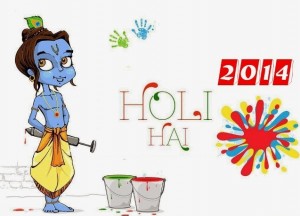
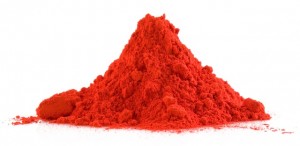
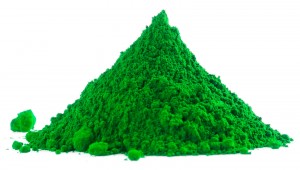
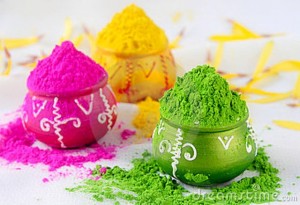
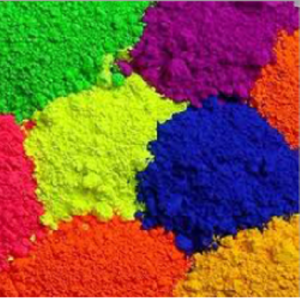
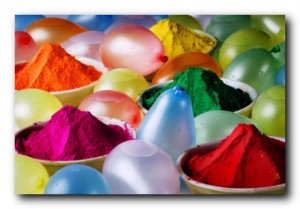


4 Comments